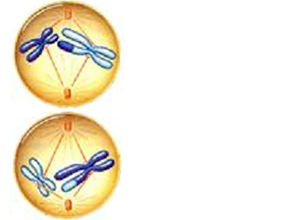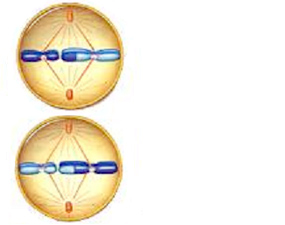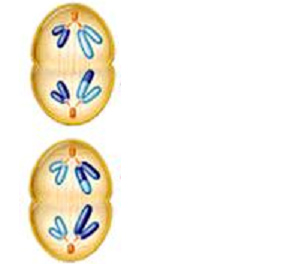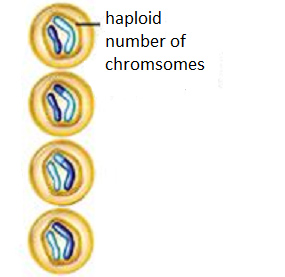The two cells produced in meiosis I now enter a second division. Unlike the first division, neither cell goes through chromosome replication.
![]() Watch this short video to see what happens in each stage of meiosis II.
Watch this short video to see what happens in each stage of meiosis II.
As the cells enter prophase II, the chromosomes—each consisting of two chromatids—become visible. The chromosomes do not pair to form tetrads, because the homologous pairs were already separated during meiosis I.


During metaphase of meiosis II, chromosomes line up in the center of each cell.


In anaphase II, the pairs of chromatids separate.


In the final phase of meiosis 4 haploid (N) daughter cells are produced.


The haploid cells produced by meiosis II are the gametes or sex cells. In males these gametes are called sperm and in females these are called eggs. Usually in females only one of the eggs produced by meiosis is involved in reproduction.